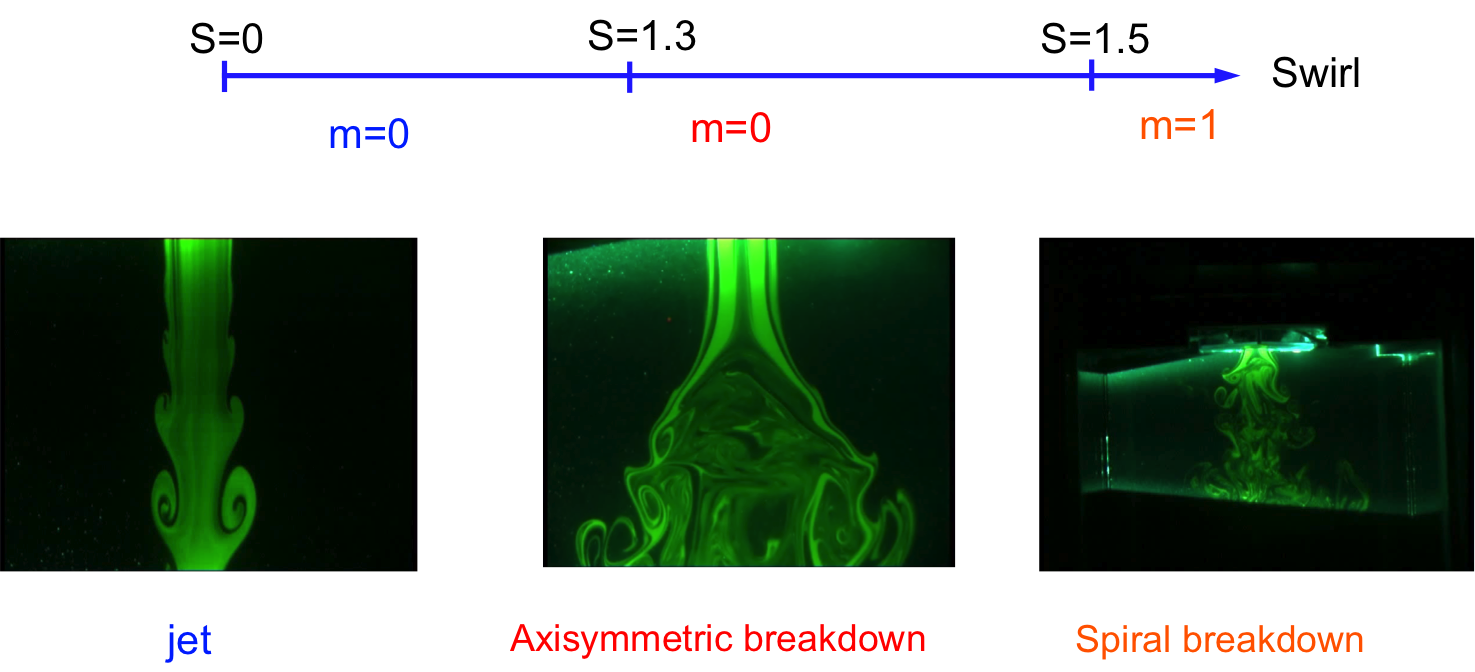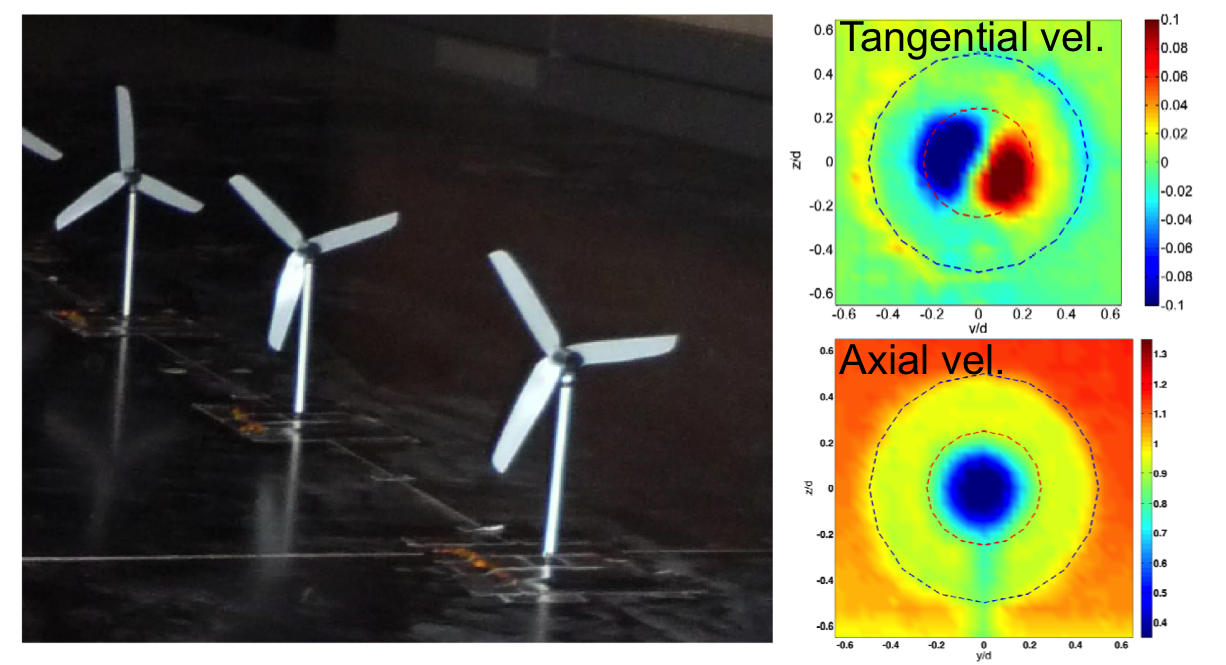Vortex breakdown is a striking phenomenon that affects swirling jets when their maximal rotational velocity approaches their axial velocity (i.e. for high enough swirl number S). Several breakdown types, bubble (m=0), spiral (m=1) and double spiral have been identified at LadHyX.

Figure 1. Bifurcation sequence obtained in the swirling jet experiment at LadHxX by F. Gallaire during his PhD and first reported by Billant, Chomaz and Huerre (1998).
An initial description of the transition from bubble vortex breakdwon to spiral (single helix) vortex breakdown has been given by Gallaire, Ruith, Meiburg, Chomaz and Huerre (2006) based on the absolutely unstable nature of the local instability of mode m=1. This analysis is however limited, since the flow is evolving very quickly in the recirculation region. Together with P. Meliga, we now use global instability theory to predict the domain of existence of each of those forms in the (Re-S) plane. The dominant unstable modes are first computed and then two coupled weakly non-linear amplitude equations rigorously derived in order to unravel the detailed bifurcation structure.
 Figure 2. Spiral vortex breakdown (m=1) , Re=120, S=1.3.
Figure 2. Spiral vortex breakdown (m=1) , Re=120, S=1.3.
Meliga, Chomaz and Gallaire (2012)

Figure 3. Double Spiral vortex breakdown (m=2), Re=100, S=1.5.
Meliga, Chomaz and Gallaire (2012)
Our understanding of mode, wavelength and wavenumber selection is applied to more complex configurations in collaboration with other labs. Together with S. Pasche (master student at LMH), Dr. M. Farhat and M. Dreyer both also from LMH, we study the spiral vortex breakdown of vortex impinging an obstacle (a wing or more recently a sphere). We aim at predicting the vortex breakdown location and the dominant precessing frequency and wavelength of the single helix.

Figure 4. Vortex impinging a transverse cylinder (S. Pasche)
In collaboration with V. Iungo and F. Porte-agel from WIRE, as well as F. Viola (Master Student) and S. Camarri from Scuola Normale Superiore Pisa, we try to predict the characteristic frequencies and wavelength at the origin of vortex meandering in the wake of wind mills. Experimental data at Re=50000 has been first acquired on model wing turbines in the wind tunnel fo WIRE.A spatial stability analysis has been then undertaken, which shows that the most spatially growing mode is the mode m=1, providing an accurate frequency and wavelngth prediction.

Figure 5 Experimental data acquisition at WIRE